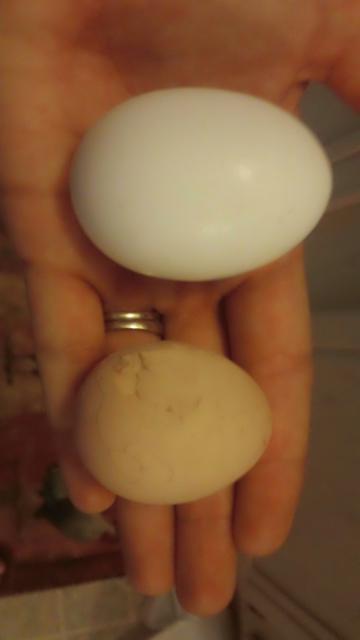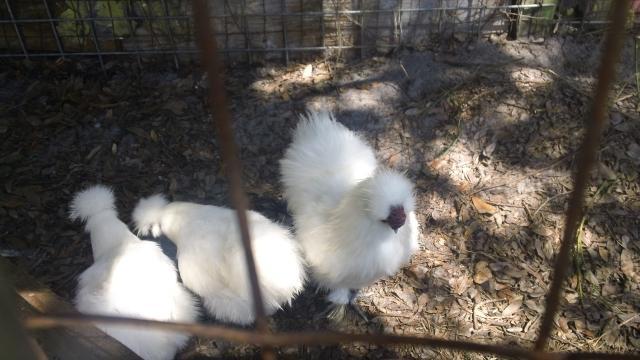- Jul 31, 2011
- 407
- 0
- 88
Wow, there's a lot of predators out there gunning for our beloved pets! All my pens are 2x4's and 1/2" wire, or chain link with lots of retrofit, so anything that gets locked up is almost certainly safe. Some of the little ones overnight in the garage. Thankfully, it's very rare that we lose anything for any reason. I think the Muscovies that hang out in our yard provide the most irresistible lure...our goose wasn't locked up because she liked to be with them, plus I thought she was too big to be killed by anything. What a tough lesson! Our neighbor has offered another gosling when the Roman Tufted set in the spring, and my daughter is thrilled. That gives me time to build a suitable pen - no more 24/7 free range, my nerves can't take it! I appreciate all the information.
Quote:
Lisa here is some info for you. Predators
Easily the largest headache in raising chickens is the wide array of predators that will attack and kill your chickens. Larger preditors include bobcats, foxes, coyotes, stray dogs, the neighbors' dogs and even your own dogs. A four foot chain-link fence will not keep out anything, six is OK, eight has not failed me yet. A single dog can easily kill twenty birds in half an hour, and once a dog gets a taste for chicken, they will keep coming back for more.
Smaller predators include opossums, skunks, weasels, hawks and raccoons. Chain link fences only slow them down, they will always find a way through. The raccoons are the smartest, and most difficult to catch. I have had a raccoon snatch a bird, run forty feet and climb an eight foot chain-link fence before I could cross twenty-feet at a run. Skunks are the most infuriating... They will chew the heads off, sometimes eating out the chest cavity, and often leave the rest of the carcas, or cache it in a corner for later snacks. Don't let a possum fool you, although they will grab eggs if they are available, they can bite clean through the neck of a bird in a snap.
Usually, the smaller predator gets a bird the first evening, and I would use the remains to bait the live trap on the next evening. Use a trap about 12" tall by 10" wide by 26" long. If the trap is too small, the animal will not enter it. Keep your scent off the trap as much as possible, and bait it with a sardine or two if you do not have chicken parts.
Quote:
Lisa here is some info for you. Predators
Easily the largest headache in raising chickens is the wide array of predators that will attack and kill your chickens. Larger preditors include bobcats, foxes, coyotes, stray dogs, the neighbors' dogs and even your own dogs. A four foot chain-link fence will not keep out anything, six is OK, eight has not failed me yet. A single dog can easily kill twenty birds in half an hour, and once a dog gets a taste for chicken, they will keep coming back for more.
Smaller predators include opossums, skunks, weasels, hawks and raccoons. Chain link fences only slow them down, they will always find a way through. The raccoons are the smartest, and most difficult to catch. I have had a raccoon snatch a bird, run forty feet and climb an eight foot chain-link fence before I could cross twenty-feet at a run. Skunks are the most infuriating... They will chew the heads off, sometimes eating out the chest cavity, and often leave the rest of the carcas, or cache it in a corner for later snacks. Don't let a possum fool you, although they will grab eggs if they are available, they can bite clean through the neck of a bird in a snap.
Usually, the smaller predator gets a bird the first evening, and I would use the remains to bait the live trap on the next evening. Use a trap about 12" tall by 10" wide by 26" long. If the trap is too small, the animal will not enter it. Keep your scent off the trap as much as possible, and bait it with a sardine or two if you do not have chicken parts.











